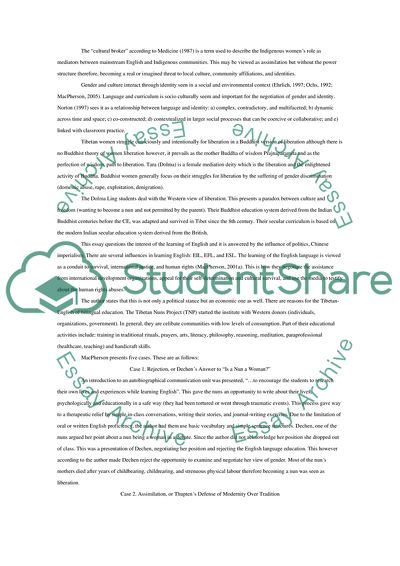Critique of the Article Negotiating Language Contact and Identity Change in Developing Tibetan-English Bilingualism Essay Example | Topics and Well Written Essays - 2500 words. https://studentshare.org/culture/1707960-a-critique-paper-on-an-article-in-the-field-of-tesol-and-bilingual-education
Critique of the Article Negotiating Language Contact and Identity Change in Developing Tibetan-English Bilingualism Essay Example | Topics and Well Written Essays - 2500 Words. https://studentshare.org/culture/1707960-a-critique-paper-on-an-article-in-the-field-of-tesol-and-bilingual-education.


